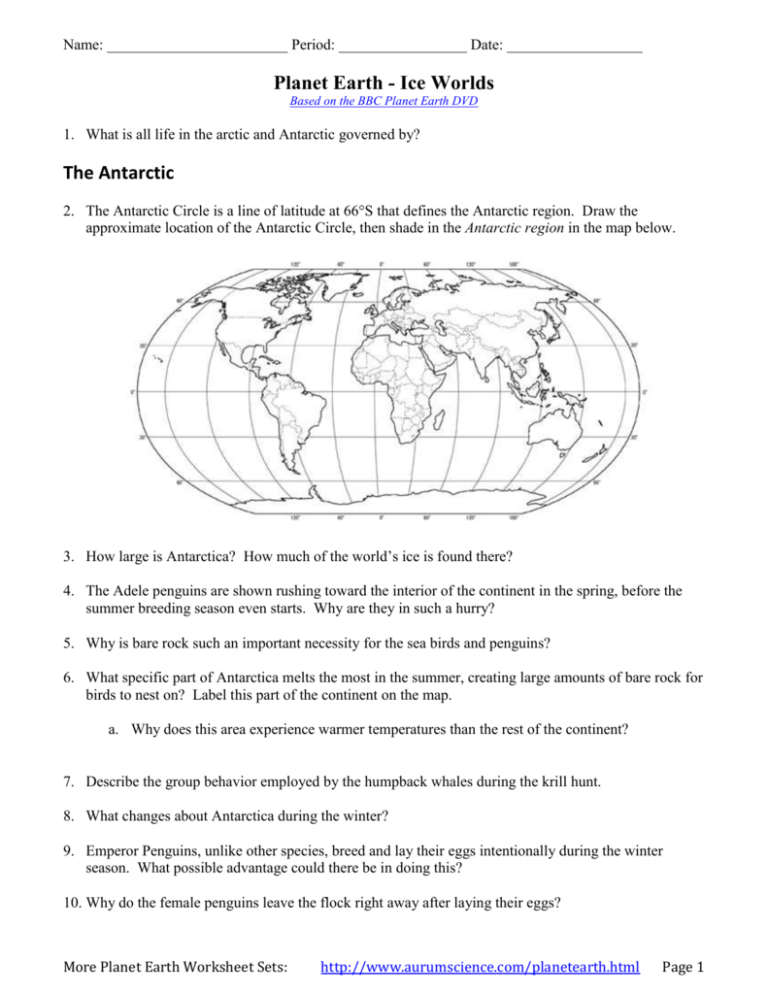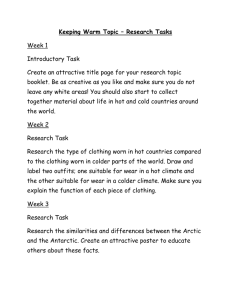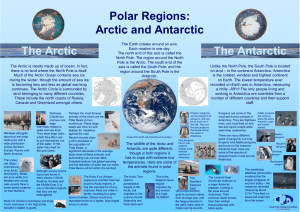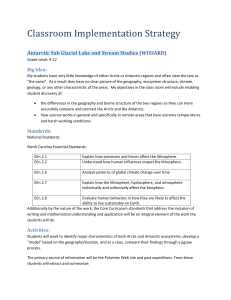Planet Earth Ice Worlds Worksheet
advertisement

Name: ________________________ Period: _________________ Date: __________________ Planet Earth - Ice Worlds Based on the BBC Planet Earth DVD 1. What is all life in the arctic and Antarctic governed by? The Antarctic 2. The Antarctic Circle is a line of latitude at 66°S that defines the Antarctic region. Draw the approximate location of the Antarctic Circle, then shade in the Antarctic region in the map below. 3. How large is Antarctica? How much of the world’s ice is found there? 4. The Adele penguins are shown rushing toward the interior of the continent in the spring, before the summer breeding season even starts. Why are they in such a hurry? 5. Why is bare rock such an important necessity for the sea birds and penguins? 6. What specific part of Antarctica melts the most in the summer, creating large amounts of bare rock for birds to nest on? Label this part of the continent on the map. a. Why does this area experience warmer temperatures than the rest of the continent? 7. Describe the group behavior employed by the humpback whales during the krill hunt. 8. What changes about Antarctica during the winter? 9. Emperor Penguins, unlike other species, breed and lay their eggs intentionally during the winter season. What possible advantage could there be in doing this? 10. Why do the female penguins leave the flock right away after laying their eggs? More Planet Earth Worksheet Sets: http://www.aurumscience.com/planetearth.html Page 1 11. Describe how the male penguins work as a group to survive through the harsh Antarctic winter. The Arctic 12. The Arctic Circle is a line of latitude at 66°N that defines the Arctic region. Draw the approximate location of the Arctic Circle, then shade in the Arctic region in the map below. 13. What is different about the ecosystem of the Arctic that allows it to support a greater diversity of animals than the Antarctic? 14. What is a polynya, and why does it attract so many Eider ducks? 15. How do musk oxen find plants to graze on during the winter? 16. The musk oxen are joined by arctic hare and ptarmigans. Classify this as a mutualistic, commensalistic, or parasitic relationship. 17. Describe the changes that occur in the arctic with the onset of summer. 18. Why is sea ice so important to polar bears? 19. Explain why the landscape forces the Arctic Skuas to be so aggressive. 20. What physical adaptations are found in polar bears that make them such skilled swimmers? 21. Explain how the walruses are able to fend off the male polar bear. 22. Why is it so important for the male Emperor Penguins to pass the chicks along to the females when they return? 23. The animals that live in the Arctic and Antarctic are seen as some of the most vulnerable to climate change. Using a specific example you saw in this episode of Planet Earth, explain why this is.




